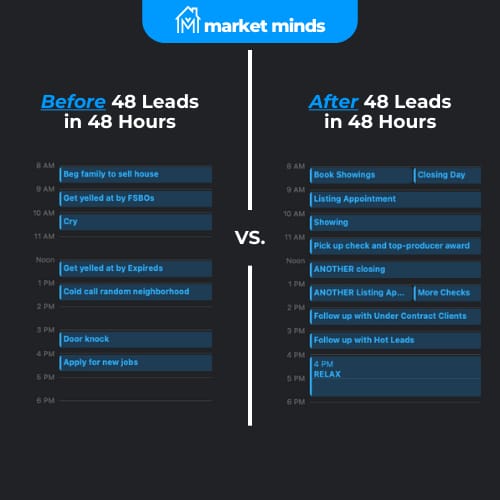
We appreciate each and every one of you for taking the time to read Market Minds. Buckle up and enjoy the free value - and you won’t want to miss the engineering masterpiece with a RETRACTABLE glass ceiling.
Your Buyers Are Making This Mistake

Source: LendingTree
A recent study by LendingTree reveals a startling trend: a majority of homebuyers are not shopping around for their mortgage, potentially costing them valuable savings. This article, based on insights from Julie Ryan Evans and edited by Dan Shepard, delves into the nuances of this phenomenon and what it could mean for prospective homebuyers.
Key Findings from the LendingTree Study
The LendingTree study provides a comprehensive look at the current state of mortgage shopping:
54% of homebuyers with a mortgage for their most recent home purchase received only one loan offer.
22% of homebuyers received two offers, while 17% received three or more.
Baby boomers are the least likely to shop around, with only 28% doing so, compared to 62% of millennials who are more proactive in seeking multiple mortgage offers.
This lack of comparison shopping means that many homebuyers may be missing out on lower rates that could save them significant amounts of money over the life of their loan.
The Cost of Not Shopping Around
The study highlights several key points about the potential costs of not shopping around for a mortgage:
45% of those who compared offers found that the lowest offer did not come from their first lender.
Insights From Freddie Mac’s Latest Report

Source: BAM
This report, titled the U.S. Economic, Housing, and Mortgage Outlook, provides a deep dive into the challenges facing the housing sector, particularly the significant shortage of housing units. According to the report, the U.S. is currently facing a deficit of approximately 1.5 million housing units, a figure that includes both for-sale and for-rent properties. This shortage is contributing to ongoing imbalances in the market, affecting everything from housing costs to vacancy rates.
Key Findings from the Report
Total Housing Supply: As of the first quarter of 2024, the total housing supply stood at 146.4 million units, marking an increase of 1.6 million units from the previous year. This increase comprises 1.4 million occupied units and 200,000 vacant units. Despite this growth, the overall supply still falls short of meeting the demand, particularly in terms of affordable housing options.
Occupancy Trends: The report highlights a significant rise in renter-occupied units, which increased by approximately 1 million over the last year. In contrast, owner-occupied units saw a smaller increase of around 600,000. This shift underscores a growing trend towards renting amid challenging market conditions.
Vacancy Rates: The rental vacancy rate has remained steady at 6.6% through the first quarter of 2024, while the homeowner vacancy rate has slightly decreased from 0.9% in the fourth quarter of 2023 to 0.8% in the first quarter of 2024. To align these rates with historical averages, an additional 1.5 million vacant units, both for-sale and for-rent, would be necessary.
What Group Do You Fall Into?

Source: Gallup
Every year, Gallup polls investors to determine their preferred asset for long-term investments. Since 2013, real estate has consistently topped the list, and this trend continues in the latest poll.
Why Real Estate?
The tangible nature of real estate often makes it a more appealing choice compared to other investment forms like stocks or cryptocurrencies, which can appear as mere numbers in an account. Many people know someone who has significantly profited from real estate over the years, which adds to its allure.
However, investing experts advise that the decision to invest in real estate should be aligned with your personal financial goals and the outcomes you desire from your investments.
Nick Foulks, an advisor and director of communications strategy at Great Waters Financial, emphasizes the importance of clarity in investment objectives. He states, "If we’re talking about long-term investing, the question is, what is the goal of the end investment? Am I trying to produce income, wealth, or security? It’s tough to say what the best long-term investing option is without knowing the desired outcome."
48 Leads in 48 Hours with $0 Spent, Guaranteed!
Implement our Facebook strategy to learn how to generate leads on autopilot without paying Google or a marketing company hundreds if not thousands of dollars to do so.
Or even better - without spending any money at all.
If you’re committed to starting 2024 strong, try it out here. If you wouldn’t jump into shark-infested waters after 48 hours to keep the guide, we’ll give you your money back. And you can keep your 48+ leads, too.
A Retractable Glass Ceiling?!
This engineering masterpiece in Atherton, CA can be yours for a cool $22.495M.
Might be a pretty expensive mistake if you leave it open when it rains 😂
TL;DR (Too Long; Didn’t Read)
A LendingTree study reveals that many homebuyers do not shop around for mortgages, with 54% receiving only one loan offer, potentially missing out on significant savings. Baby boomers are the least likely to compare offers, unlike millennials who are more proactive. Additionally, a Freddie Mac report highlights a severe housing shortage in the U.S., with a deficit of 1.5 million units, exacerbating market imbalances and affecting housing costs. Meanwhile, a Gallup poll shows real estate remains the top long-term investment choice for many, driven by its tangible nature and potential for significant profit.
Have a great weekend - we’ll see you next Saturday.
Cheers 🍻
-Market Minds Team


